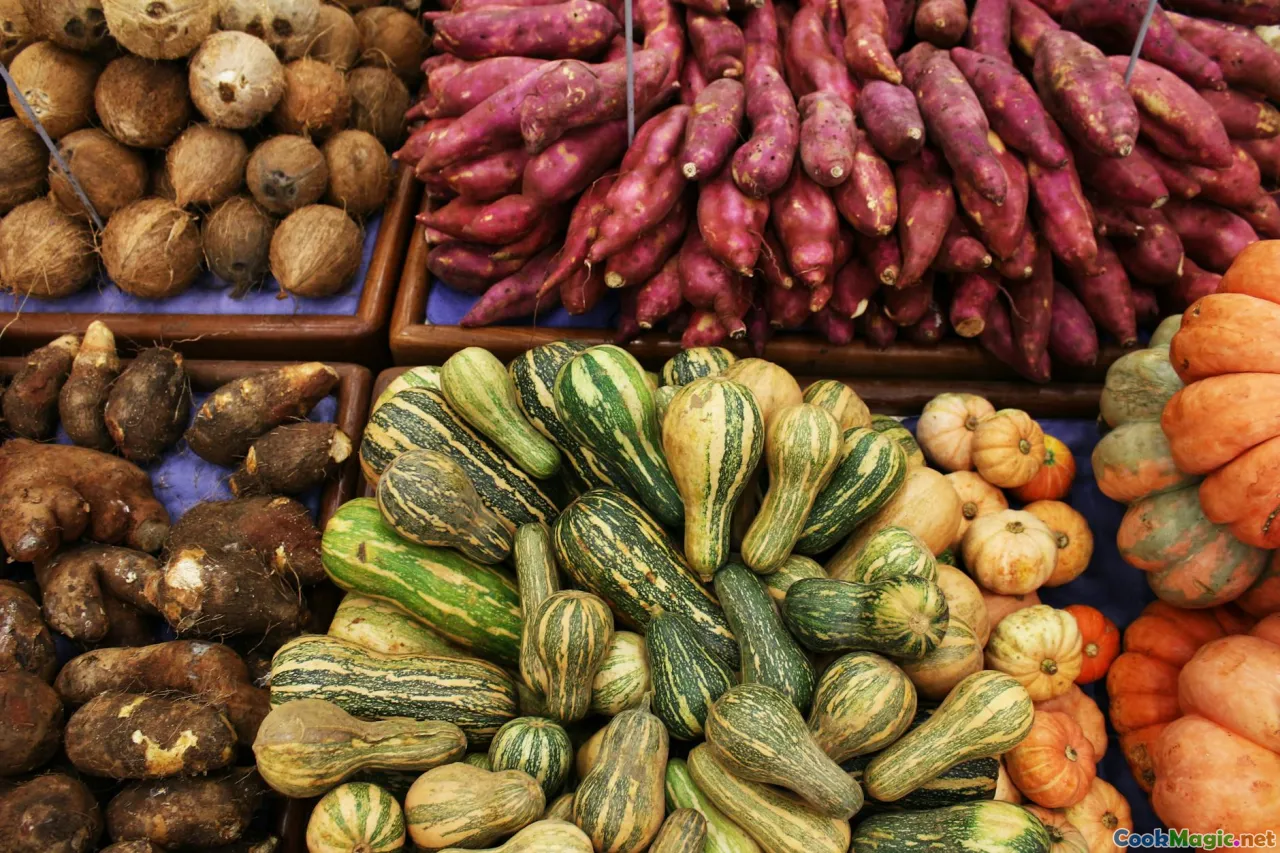Exploring Traditional Cook Islands Food Ingredients
7 min read Delve into the rich tapestry of Cook Islands ingredients, from taro and coconut to fresh fish, uncovering the flavors that define their vibrant cuisine. April 27, 2025 05:55
Exploring Traditional Cook Islands Food Ingredients
Imagine a place where the ocean’s bounty melds seamlessly with lush, volcanic soil—an island paradise where every ingredient tells a story of tradition, resilience, and community. The Cook Islands, nestled in the heart of Polynesia, boasts a cuisine rooted in the land and sea, shaped by centuries of cultural exchange and environmental harmony. To truly appreciate their culinary heritage, one must delve into the core ingredients that have nourished generations and continue to form the backbone of their vibrant dishes.
A Journey Through the Heart of Cook Islands Ingredients
The Land’s Bounty: Root Vegetables and Tropical Fruits
The Cook Islands' landscape is a fertile canvas, bursting with an array of root vegetables and fruits that are both staples and symbols of island life.
Taro
Taro is more than just a root; it’s a cultural emblem. With its starchy, slightly nutty flavor and smooth, creamy texture when cooked, taro is fundamental to many traditional dishes. Its leaves, often boiled with coconut milk, serve as a nutritious vegetable side, rich in vitamins and minerals. The process of harvesting taro is a communal affair, often accompanied by stories and songs, reinforcing its cultural significance.
Breadfruit
The breadfruit tree, with its broad, lush leaves and dense, starchy fruit, is a gift from nature. When roasted, the breadfruit develops a golden, crispy skin and a soft, fluffy interior reminiscent of bread, hence its name. It’s often prepared in umu (underground oven) or boiled, serving as a filling staple that sustains islanders through times of plenty and scarcity alike.
Coconut
Coconuts are the lifeblood of Cook Islands cuisine. The fragrant, milky water inside is refreshing and hydrating, while the white flesh is versatile—grated into salads, blended into smoothies, or pressed to produce rich coconut cream and oil. The aroma of freshly grated coconut, especially when toasted, evokes warm memories of island life and family gatherings.
The Sea’s Bounty: Fresh Fish and Seafood
Given the Cook Islands' maritime location, the sea provides an abundant supply of fresh fish and seafood, essential to their diet.
Tuna and Mackerel
These are among the most prized catches, known for their firm texture and rich flavor. Grilled over an open fire or prepared as sashimi, their taste is enhanced by simple, traditional seasonings—lime, salt, and native herbs.
Reef Fish
Colorful reef fish like parrotfish and angelfish are common in local markets. Their delicate, flaky flesh is often steamed or baked in banana leaves, preserving their subtle flavors.
Shellfish
Crabs, lobsters, and mollusks are also integral. The sweet, succulent meat of cooked crabs and lobsters is a celebratory dish, often served with a tangy sauce made from local citrus.
The Spices and Flavors: Enhancing Simplicity
While Cook Islands cuisine emphasizes fresh, local ingredients, a handful of native spices elevate their dishes.
Lime and Lemon
Bright, citrusy notes are a cornerstone, used generously to add freshness and balance to fish and seafood.
Native Herbs
Herbs like cilantro, basil, and native Polynesian leaves such as ‘ava (kava) and ‘ava root are used to infuse dishes with aromatic depth.
Salt and Coconut Oil
Salt, often from the sea, enhances natural flavors, while coconut oil adds richness and a distinctive tropical aroma.
Cultural Significance of Food Ingredients
For the Cook Islands, ingredients are more than sustenance—they embody history, resilience, and community. The traditional methods of harvesting taro, baking breadfruit in umu, or preparing fresh fish reflect a deep connection to the land and sea.
Community and Tradition
Food preparation often involves communal effort, from gathering ingredients to cooking and sharing meals. These practices foster social bonds and pass down culinary wisdom through generations.
Celebrations and Rituals
Certain ingredients hold ceremonial value—coconut and breadfruit are common in festivities, symbolizing prosperity and life.
Personal Reflections: A Taste of Paradise
During my travels in the Cook Islands, I was struck by the simplicity and purity of their ingredients. The aroma of freshly baked breadfruit, the zing of lime-marinated fish, and the creamy richness of coconut milk blending into a harmonious symphony of flavors left an indelible mark on my palate and soul.
One memorable evening, I watched local cooks prepare a traditional umu, layering taro, breadfruit, and fresh fish over hot stones, covered with banana leaves. As the ingredients cooked slowly, their flavors melded, releasing enticing aromas that beckoned everyone to the feast. That experience underscored the profound relationship between the islanders and their ingredients—their respect, ingenuity, and love for their land and sea.
Final Thoughts
Exploring the traditional ingredients of the Cook Islands reveals more than just a list of foods—it offers a window into a culture deeply rooted in nature, community, and history. From the hearty staples of taro and breadfruit to the ocean’s plentiful bounty, each ingredient tells a story of survival, celebration, and identity.
For culinary adventurers and cultural enthusiasts alike, understanding these ingredients enriches the appreciation of Cook Islands cuisine, inspiring us to honor and preserve these age-old traditions. Whether as a home cook or a curious traveler, embracing these flavors invites a taste of paradise—a true reflection of island life’s simplicity and abundance.









